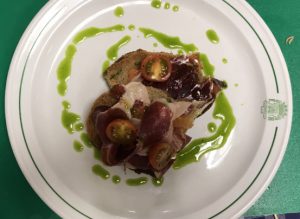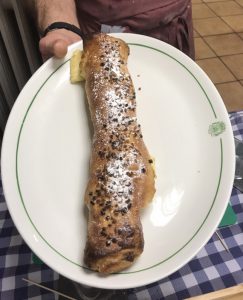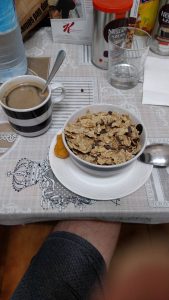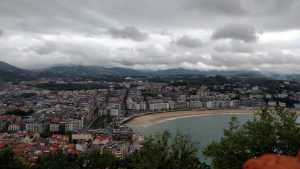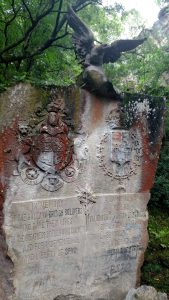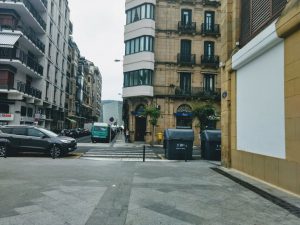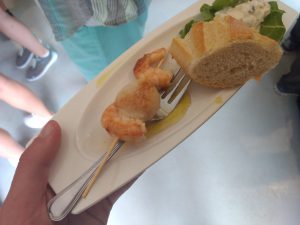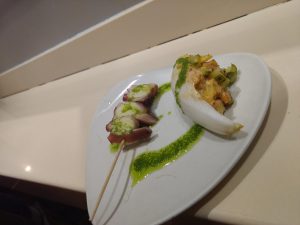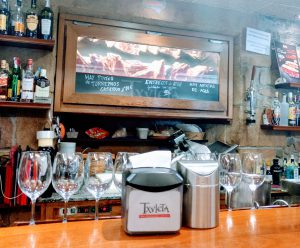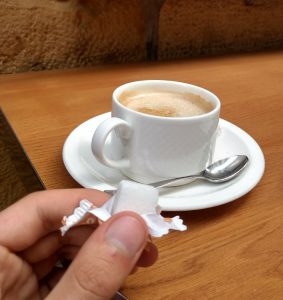I remember our first day in Spain like it was yesterday. It was a surreal and shocking experience to say the least. As soon as the front door of my host family’s apartment opened, all I could think was “what have I gotten myself into?”. The sudden emersion into the Spanish language was, for someone who has never studied Spanish before, a little scary. With the blink of an eye I had crossed the threshhold of the trip I’d been dreaming about since last fall. I was in San Sebastián: where the food is meant for all to have access to, and the sun doesnt set until nearly 10 pm. Standing on the shore of La Concha that first night I had no idea how this trip would play out. But thanks to the structure of this specific study abroad, quick friendships were able to form and cement themselves within these 3 weeks. Friendships that we will most definitely continue to grow and cultivate back at Umass Lowell.
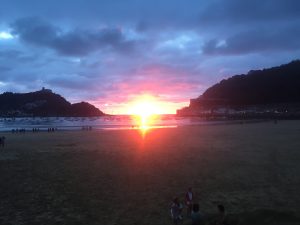
The very structure of this trip that allows for such friendships is simple. Throw this group of college kids into a foreign country and let the culture and cuisine of the Basque country overtake them: even overwhelm them in part. This will draw them nearer to each other due to the sharing of such a new and large scale experience. Our almost daily excursions with our professor also helped to show us the wonders of being abroad, whilst creating the perfect atmosphere for us students to become close friends. For example, during our pintxo tours we had to encourage one another to try some of the more daring culinary dishes our professor ordered, such as octopus or ox tail. On our free days we had to support one another when our Spanish skills fell short, and we had to watch out for one another while we explored the city at night. It became evident through our actions how much we cared for one another. We would always tell group members to “text us when you make it home safely!”. Grant even came to the bus stop in the rain at 8 am just to say goodbye as some of us left for the airport, which was very sweet.
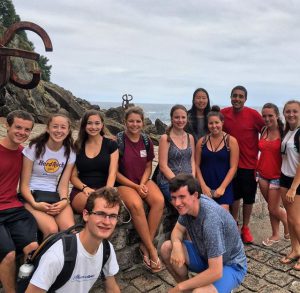
There were so many amazing experiences I had while on this trip, and I’m glad that along the way I made new friends to remember those experiences by. I am of firm belief that getting to study abroad brought us closer together than we might have been if we didn’t have our amazing professor to teach us and lead us around the city. Thanks to him and this trip, I feel like I really lived in Spain. I learned Spanish and Basque language, recipes, and customs. Most importantly, I feel connected to the city that I now know so much about. And I’ve come to realize how much I miss San Sebastián. I miss the sounds I heard at night through my bedroom window; the laughter, the ocean, and the distant music from jazz concerts along the shore. I miss walking everywhere, especially to the stunning beaches. I miss having my friends to explore with and try new things with. And just hours from my departure, I could undoubtedly confirm that the scariest part of our trip wasn’t the arrival. It wasn’t not knowing how to speak the native language of this land or going through the airport by myself for the first time. The scariest thing about this trip is that it will never happen again and I don’t want to forget it. I don’t want to forget how it felt being 19 and in Spain for the first time. Or how amazing it was to be studying Spanish and immediately getting to practice it out in the city. I don’t want to forget all the beautiful places we visited and the various people we met from around the globe. I dont want to be anyone but who I became on this trip: the person who tries new things and says yes to experiences that might scare them. And I most definitely will not be in Spain again with the best group of friends I could ask for and our wonderful professor. To love something so much, and know it’ll never happen again in the same fashion is heartbreaking. But like I told Aislinn after she had finished her last bite of the worlds best tortilla, “don’t be sad it’s over, be glad that it happened”.

Thank you Honors College at Umass Lowell and Prof. Z for making such a powerful experience possible for our group. I will be forever grateful for this trip and what it has done for me as a person, and I’m sure my classmates feel the same.
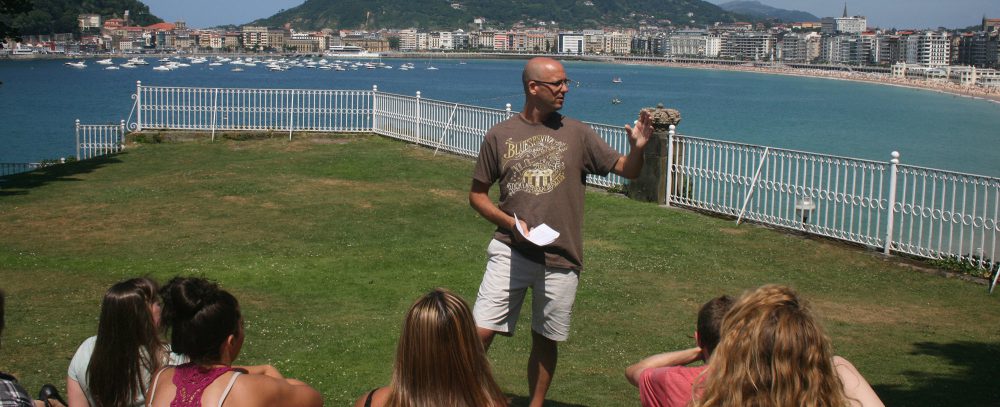
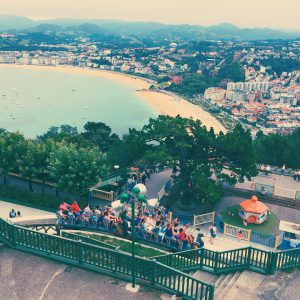
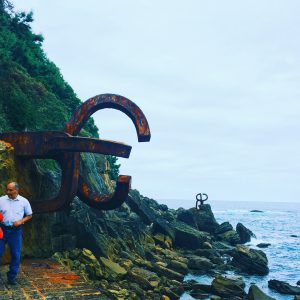
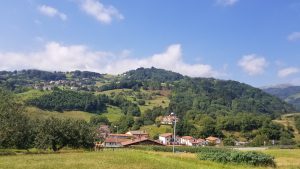

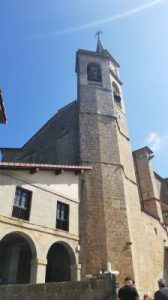
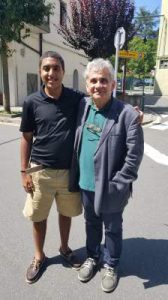

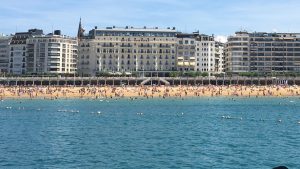
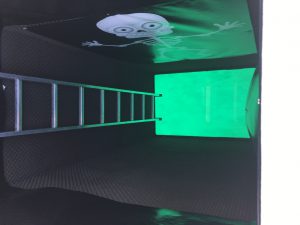
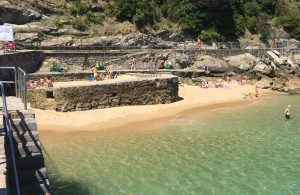
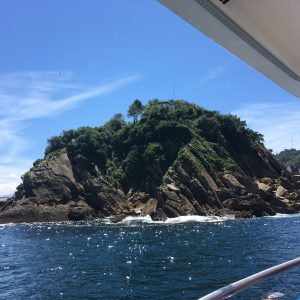
 The hike displayed characteristics of the city’s history. The stairs were excruciating at points and although many tourists and locals make the hike to see the statue of Jesus, the trail does not lose its lush green areas and historic aspects. Along the hike, there were cannons that prove that this city went through some difficult times before it became the safe and accepting place that it is now. Furthermore, the sights from the mountain capture the beauty of the beaches, and the unique architecture that defines the area.
The hike displayed characteristics of the city’s history. The stairs were excruciating at points and although many tourists and locals make the hike to see the statue of Jesus, the trail does not lose its lush green areas and historic aspects. Along the hike, there were cannons that prove that this city went through some difficult times before it became the safe and accepting place that it is now. Furthermore, the sights from the mountain capture the beauty of the beaches, and the unique architecture that defines the area.
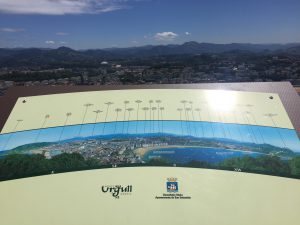
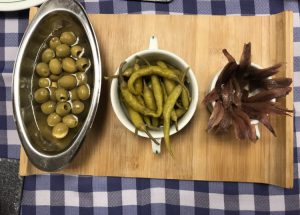
 The next pintxo we all devoured was a shrimp dish. While I am not the biggest fan of seafood, I still wanted to give it a try, and all things considered it as pretty good. The shrimp was dipped in an olive oil and then covered in bits of coconut to create a great combination of flavors. As compared to cocunut shrimp in America, it tasted much more natural and wasn’t fried which gave it a lighter taste. Overall, it was far better than it is back home.
The next pintxo we all devoured was a shrimp dish. While I am not the biggest fan of seafood, I still wanted to give it a try, and all things considered it as pretty good. The shrimp was dipped in an olive oil and then covered in bits of coconut to create a great combination of flavors. As compared to cocunut shrimp in America, it tasted much more natural and wasn’t fried which gave it a lighter taste. Overall, it was far better than it is back home.
